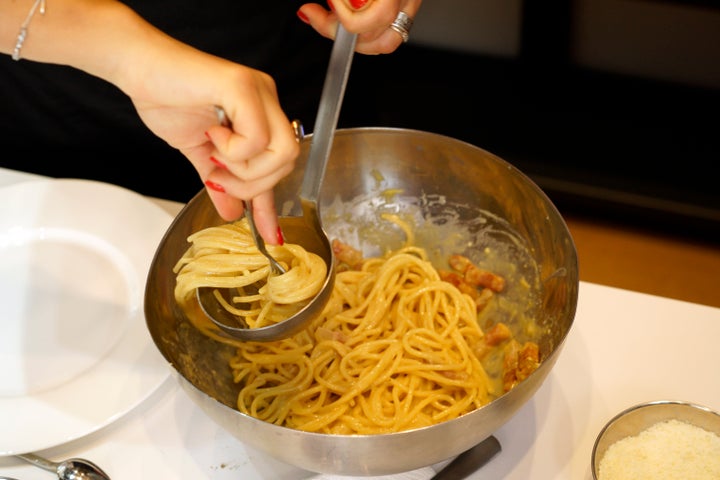
The UK loves Italian food ― in fact the cuisine landed the top spot in the world’s flavour scoreboard in 2019.
But whether it’s while making the sauce, adding your pasta water, or even knocking up your own pesto, it seems a lot of us are missing out on some traditional steps.
The country’s national dishes often involve processes we’re not familiar with, but so long as you accept that it’s probably not quite the same as what you’d chow down on in Bologna, your homemade pasta recipe is none of my business.
One thing I do think we can all stand to learn from the masters themselves, though, is which pasta goes best with which sauces ― after all, l if you’ve spent hours sweating over a ragu, you’ll want to pair it with a shape that’ll make it sing most.
How can I work out which pasta shape goes with which pasta sauces?
There are over 350 different types of pasta in Italy. So how are you meant to go through each one?
It turns out that that vast array of carbs can be organised into five general categories per Italian food site Eataly:
- Tubolare, or tubed shapes like rigatoni or penne, is great with hefty, meaty sauces like a ragu, cheese, or chunky veg.
- Attorcigliaita, or twisty pasta shapes like fusilli, are great for capturing small specks of more finely chopped ingredients, like tiny sausage specks in a tomato sauce or pesto.
- Lunga, or long pasta like spaghetti, tagliatelle, and linguini depends on its thickness. Thin angel hair pasta might do better with seafood or creamy sauces, while thicker tagliatelle can stand up to thicker veg.
- Ripiena, or stuffed pasta like tortellini and ravioli, are likely already so flavourful and thick that they don’t need much more than a butter sauce or even a broth.
- Pastine, or teeny-tiny pasta like orzo and stelline, fare best in soups where they can thicken up the broth and get slurped from a spoon.
Of course, some pasta (like spirali) are both tubed and twisty; others, like shell pasta or gnocchi, evade these categories.
But in general, the thickness of your sauce should correspond to the capacity of your pasta to retain its ingredients; more delicate, thin pasta should be paired with lighter fare, while thicker, more robust shapes can be better paired with meat, mushrooms, heavy cream sauces, cheeses, and other things you want to taste in every bite.
Anything else?
Pasta site Pasta Evangelista shared a helpful grid suggesting which sauces go with which shapes.
These are: